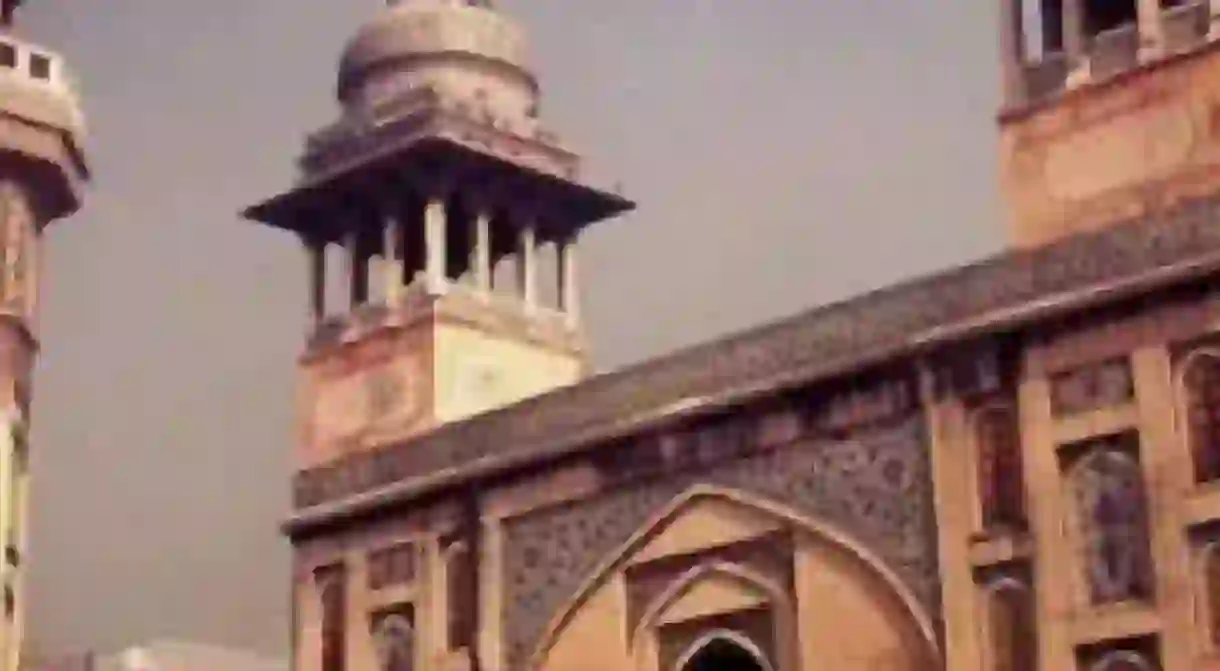Reliving The Past In Lahore’s Wazir Khan Mosque

Lahore is known as the ‘Paris of the East’ for a reason. A rich cultural heritage and tumultuous history color its streets and monuments. Located in Lahore’s inner city, the Wazir Khan Mosque is on the tentative list as a UNESCO World Heritage site and is one of the most spectacular sights in Pakistan’s cultural capital.

The glorious Wazir Khan Mosque stands near the Delhi gate of the walled inner city of Lahore. The way in leads through a buzzing bazaar, where the sounds of car horns and haggling voices rise high above the mosque’s walls.

Built 1634-35 A.D. during the reign of Mughal Emperor ShahJehan, the mosque takes its name from its builder, Nawab Wazir Khan, who was the Governor of Lahore until 1639 A.D. The construction work took seven years.

Four octagonal minarets mark the corners of the main courtyard, lending the structure balance and adding to its grandeur. As you walk inside from the main entrance, you will find that the main mosque is built from brick and tile, a construction typical of the area and period in which Wazir Khan was created. Each of the mosque’s five compartments is crowned by a dome and opens onto a large courtyard. The one is the centre is the main prayer hall – larger than the rest, it features a high framed portal protruding from the façade, and its walls are covered by intricate frescos. This type of architectural design was employed for the first time in Lahore. Other mosques were built later on using the same construction methods, the most famous of them being the Badshahi Mosque, also located in Lahore.

Kamil Khan Mumtaz, a Lahore-based architect, educator, author, and pioneer in the movement for conservation of architectural heritage, states in his essay ‘Reading Masjid Wazir Khan’:
‘This elaborate entrance is intended to symbolize the transition from this life to the next. The wide-open gate of God’s munificence. Indeed, as we climb the steps into the generous portico we find ourselves in a classic ‘Chahar Taq’, that is, the ancient Persian form of domed chamber with four entrances, which was assimilated into Islamic architecture, with its symbolism of the earthly material aspect of life represented by the cube base, and the spiritual, heavenly or metaphysical aspect represented by the hemispherical dome above. The transition from the square base to the hemispherical dome is necessarily an intriguing aspect of this form. Looking up we find the symbolism of the dome is emphasized by the frescoes round its base. These display ‘fruit of every kind on silver platters’ and ‘pitchers of wine’ and ‘trees in pairs’, an unmistakable reference to the Koranic paradise.’

The Wazir Khan Mosque contains some of the finest examples of mosaic tile work from the Mughal period. Masterful calligraphy verses from the Holy Koran adorn the walls alongside Persian poetry in its elegant forms. Floral designs and patterns emerge in symmetrical, harmonious waves, bringing a sense of tranquility to the mosque’s echoing halls.

Its impressive blend of calligraphy, geometrical forms and floral decoration lends a unique dimension to the building’s structure, and makes the Wazir Khan Mosque stand out as a paragon of beauty, balance and grandiosity.













